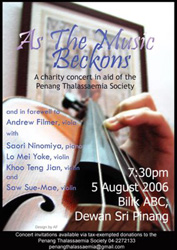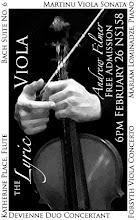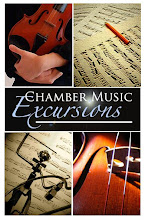A. Keeping the Bow Straight - Again
Playing with a straight bow is harder than we realize. Playing a piece of music from memory is good not just because it looks better on stage, but because it allows one to focus on details like watching where the bow goes. In addition to what has already been mentioned in the previous posting on this subject it may be good to consider the following: 1. When going down bow in the upper half of the bow, you should feel that the arm is actually moving away from the rest of the body. If it feels too “easy,” chances are that the elbow is locked, and the bow is moving sideways, and away from the bridge.
2. Sometimes one can start off in the right place on an A or E string, but when heading to the lower strings, the bow can go off angle. Practice moving from the highest to the lowest strings, keeping the bow the same distance from the bridge on all strings.
B. Bow management
1. Sometimes we use a particular part of the bow for a section of the music not because it is the best place in the bow, but because the previous section led us to it. How do you realize if this is a problem? This situation is a good example: you practice an area which has a bow problem and you solve the problem – but when you play from the start you end up with the same issue. How do we solve the issue? Check the bars before and see if any of the music there leads you to start the section in the wrong part of the bow. In other words, instead of working forwards, work backwards – eg. practice a section, then add four bars before it, and then another four bars. The same practice technique has been recommended by Prof. James Dunham as way to memorize music. This is because the area we are more familiar with is always in front of us, so we always have a goal to which we can look forward.2. Sometimes we can also get to a wrong part of the bow because we do not realize that we have to lift/retake the bow. For example, let’s say we find a section of music which has a quick off-the-string notes that sound best in the point of bow marked below in red:
 Playing on the E string, there is no problem. However, if we move to the G string by just raising the arm, we find that we are in a higher section of the bow, and the same bow stroke will not work as well here. In other words, we may have to readjust the place of the bow as we move from string to string. Look at how far we are from the original place marked in red:
Playing on the E string, there is no problem. However, if we move to the G string by just raising the arm, we find that we are in a higher section of the bow, and the same bow stroke will not work as well here. In other words, we may have to readjust the place of the bow as we move from string to string. Look at how far we are from the original place marked in red:
3. The last issue with bow management that we will discuss in this posting is bow speed. Play in front of a mirror and watch to see if there are any sections where it may help to use more or less bow. Often the case will be like this:
 The blue represents what would produce good, even tone production. The red is a common reality for many of us, using too much changes of bow speed to end phrases. It is also common that we end up using more bow than necessary, and we end up at the tip of the bow and need to have a wide jump to get back to the right part of the bow. This is why bow speed exercises are useful – especially ones which test how slowly you can move a bow without stopping. One recommended to me by Mr. Lim Soon Lee is to try playing an open string and watching the second hand of clock. The ultimate goal is around 120 seconds with only one bowstroke – but for most of us, 30-60 seconds is a reasonably successful result.
The blue represents what would produce good, even tone production. The red is a common reality for many of us, using too much changes of bow speed to end phrases. It is also common that we end up using more bow than necessary, and we end up at the tip of the bow and need to have a wide jump to get back to the right part of the bow. This is why bow speed exercises are useful – especially ones which test how slowly you can move a bow without stopping. One recommended to me by Mr. Lim Soon Lee is to try playing an open string and watching the second hand of clock. The ultimate goal is around 120 seconds with only one bowstroke – but for most of us, 30-60 seconds is a reasonably successful result.C. Tightness of the Bow
A very simple but helpful way to make good tone is to check the bow tightness. Very often we tighten a little too much – and in an air-conditioned room, bows can get tighter as they adjust to the colder temperature. The basic rule is that the bow needs to be only as tight as so that the wood of the stick doesn’t hit the strings. Some people do think that it makes it difficult to bounce without a little additional tightness, but I think it really depends on the bow. Experiment with loosening the bow slightly and see how we like the end result.Concluding Comments
It is important to realize that the discussions above are overall guidelines. Sometimes we intentionally move the bow away from the bridge, and sometimes we want to move the bow faster to create certain effects - but the recommended ideas above are to avoid some of the common mistakes, and to provide a solid basis in tone production. A final suggestion: try playing a little closer to the bridge, especially for violists - something else I picked up from Asst. Prof. Tony Devroye. It may sound a little harsh close up, but it has greater overall projection.






No comments:
Post a Comment